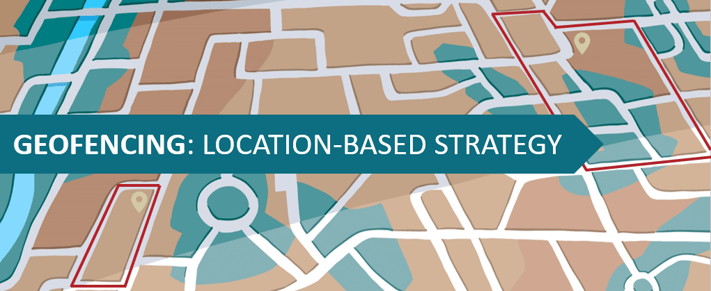Even if you haven't utilized geofencing yet, you've probably heard about it. It's pretty powerful. Geofencing is even more precise than geo-targeting—a very specific virtual perimeter is set up using latitude and longitude coordinates. Once a device enters a virtual perimeter, the consumer receives ads on their device. Read on to get the rundown on this location-based marketing strategy.

What is Geofencing?
Geofencing is a hyper-local targeting tool that allows marketers to serve messages to mobile device users within a defined geographic area.
- Geofences are a virtual perimeter and can be set up to include very specific locations using cross streets and/or latitude and longitude coordinates.
- Once a device enters the virtual perimeter, consumers receive relevant ads on their device.
- Ads can be served on websites as well as in-application on all iOS (Apple) and Android devices.
- Cross-device targeting can reach users across all of their connected devices – after they enter the virtual perimeter.
- Geofencing has the ability to mitigate impressions to non-consumers who may frequently enter the virtual perimeter (i.e. staff/employees),

1 ClickZ & Search Optics – The State of Mobile Advertising, 2016 Report
What Hyper-smart Strategies can Marketers Deploy with Geofencing?
The potential strategies are only limited by your creativity and innovation – following are some industry specific examples to get the brain going:
- Life Insurance – Target specific audiences (i.e. New Families) by serving segment-specific creative & messaging. How? Set up geofences for maternity wards within hospitals or Babies"R"Us stores and serve banner ads with relevant creative/messaging specifically for the new family life stage.
- Healthcare Insurance – Target specific audiences (i.e. Active Lifestyles) by serving segment specific creative & messaging. How? Set up geofences around areas that favor healthy activities (gyms, fitness centers, races, marathons, hiking trails, biking trails, etc.) and serve banner ads to those healthy individuals during OEP.
- Travel & Hospitality – What if an airline could identify frequent flyers? What if a cruise line could identify known cruisers? What if a luxury hotel could identify guests staying at competitor properties? This is possible by using geofencing as a “conquesting” strategy. How? Set up geofences around specific airport terminals, cruise ship terminals and competitor properties and serve banner ads with aggressive messaging and offers to pull market share from your competitors.
- Retail – There are hundreds of coffee shops in a large city but the smaller shops cannot afford an expensive campaign. However, they could benefit from a hyper-local and cost-effective mobile campaign. Geofencing would allow them to serve offers only to potential customers within a four-block radius of their store.
Additional marketing reads:
- 2016 Marketing Stats to Optimize 2017 Marketing Plans
- 4 Steps to Successful SEO [Video Series]
- 3 Powerful Insights in Include Women in Your Next Marketing Campaign





